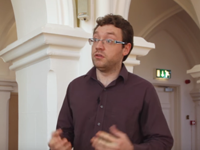-
Courses
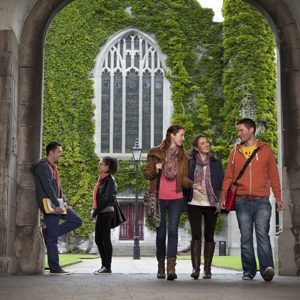
Courses
Choosing a course is one of the most important decisions you'll ever make! View our courses and see what our students and lecturers have to say about the courses you are interested in at the links below.
-
University Life

University Life
Each year more than 4,000 choose University of Galway as their University of choice. Find out what life at University of Galway is all about here.
-
About University of Galway

About University of Galway
Since 1845, University of Galway has been sharing the highest quality teaching and research with Ireland and the world. Find out what makes our University so special – from our distinguished history to the latest news and campus developments.
-
Colleges & Schools
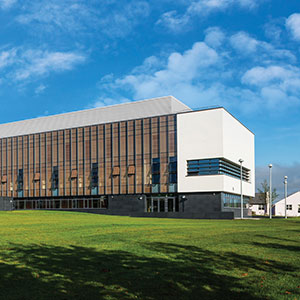
Colleges & Schools
University of Galway has earned international recognition as a research-led university with a commitment to top quality teaching across a range of key areas of expertise.
-
Research & Innovation

Research & Innovation
University of Galway’s vibrant research community take on some of the most pressing challenges of our times.
-
Business & Industry
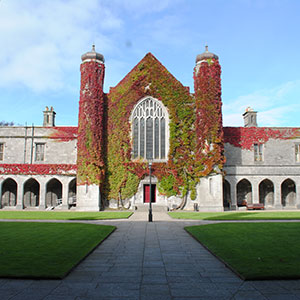
Guiding Breakthrough Research at University of Galway
We explore and facilitate commercial opportunities for the research community at University of Galway, as well as facilitating industry partnership.
-
Alumni & Friends
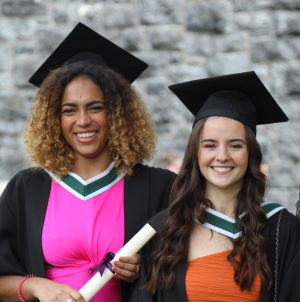
Alumni & Friends
There are 128,000 University of Galway alumni worldwide. Stay connected to your alumni community! Join our social networks and update your details online.
-
Community Engagement
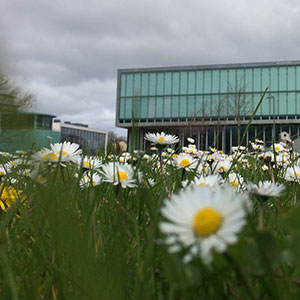
Community Engagement
At University of Galway, we believe that the best learning takes place when you apply what you learn in a real world context. That's why many of our courses include work placements or community projects.
Medical Physics (MSc)
Course Overview
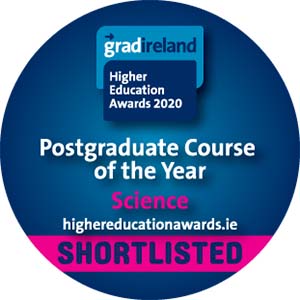
This MSc programme is designed to meet the demand for qualified medical physicists. It is primarily geared toward training for physicists in the application of radiation physics in medicine but maintains a reasonable exposure to key aspects of clinical engineering so that students receive a comprehensive knowledge of the application of the physical sciences and engineering to medicine.
The course is unique in that it is closely integrated with the University Hospital Galway.
The majority of lectures and course materials are delivered by hospital staff.
The course provides a unique opportunity to see the operation of a busy academic hospital.
September 2015: University of Galway’s MSc in Medical Physics is the first European MSc programme to be awarded accreditation from the Commission on Accreditation of Medical Physics Education Programmes (CAMPEP) and the second programme worldwide. Read more here.
Scholarships available
Find out about our Postgraduate Scholarships here.
L–R: Dr Christoph Kleefeld (Clinical director MSc in Medical Physics), Ryan Muddiman, Morgan Healy, Kevin Byrne, Sthuthi Medepalli, Michael Moran, David Connolly & Dr Mark Foley (Academic director MSc in Medical Physics).
2019 Medical Physics postgraduate scholars

L–R: Dr Christoph Kleefeld (Clinical Director, MSc in Medical Physics), Ryan Muddiman, Morgan Healy, Kevin Byrne, Sthuthi Medepalli, Michael Moran, David Connolly & Dr Mark Foley (Academic Director, MSc in Medical Physics).
- 2019 Walton scholarship award—Kevin Byrne
- 2019 van der Putten scholarship award—David Connolly
- 2019 George Johnstone Stoney scholarship award—Michael Moran
- 2019 Postgraduate International Merit scholarship award—Sthuthi Medepalli
- 2019 Postgraduate scholarship—Morgan Healy & Ryan Muddiman
Absent from the picture were international student scholarship holders Anwar Beleehan & Rawan Tawatti.
Applications and Selections
Applications are made online via the University of Galway Postgraduate Applications System. Selection is based on the candidate's academic record at under-graduate level and their aptitude for the course. Candidates may be interviewed to determine suitability.
Who Teaches this Course
Requirements and Assessment
Assssments take the form of assignments, essays, presentations and conventional exams. There is an increasing emphasis on self-directed learning. A small research project counts for about 30% of the overall marks.
Key Facts
Entry Requirements
Graduates must hold at least a Second Class Honours, Level 8 degree (or equivalent international qualification) in physics or experimental physics, electronic engineering, or another relevant discipline as determined by the College of Science. Candidates with a primary degree without honours and with three years’ relevant and appropriate practical experience may be also considered.
Additional Requirements
Recognition of Prior Learning (RPL)
Candidates with a primary degree without honours and with three years’ relevant and appropriate practical experience may be also considered.
Duration
1 year, full-time
Next start date
September 2026
A Level Grades ()
Average intake
Up to 20
QQI/FET FETAC Entry Routes
Closing Date
No set closing date. Offers made on a continuous basis.
NFQ level
Mode of study
ECTS weighting
90
Award
CAO
Course code
MSC-PY
Course Outline
The MSc consists of a fairly intense programme of lectures, workshops, laboratory sessions, tutorials and self-directed learning, followed by a four to five-month research project. The syllabus contains modules covering traditional Medical Physics topics, such as Radiation Fundamentals, and Hospital and Radiation Safety, but also provides an introduction to other areas like Clinical Instrumentation, Modules in Anatomy, Physiology, Medical Informatics and Safety and Risk Management.
Curriculum Information
Curriculum information relates to the current academic year (in most cases).Course and module offerings and details may be subject to change.
Glossary of Terms
- Credits
- You must earn a defined number of credits (aka ECTS) to complete each year of your course. You do this by taking all of its required modules as well as the correct number of optional modules to obtain that year's total number of credits.
- Module
- An examinable portion of a subject or course, for which you attend lectures and/or tutorials and carry out assignments. E.g. Algebra and Calculus could be modules within the subject Mathematics. Each module has a unique module code eg. MA140.
- Optional
- A module you may choose to study.
- Required
- A module that you must study if you choose this course (or subject).
- Semester
- Most courses have 2 semesters (aka terms) per year.
Year 1 (90 Credits)
RequiredSI2103: Fundamentals of Physiology
SI2103: Fundamentals of Physiology
Semester 1 | Credits: 5
Fundamental Physiology (SI210) is a blended learning 5 ECTS module that has been specifically created to provide students of Health & Safety Systems with some fundamental knowledge of human body function that is relevant to their course of study.
(Language of instruction: English)
Learning Outcomes
- Appreciate the role of Physiology in a range of professional careers.
- Appreciate the concept of homeostatic mechanisms within the body or ‘body balance’.
- Understand the importance of water in the body, and the relevance of body fluid compartments.
- Demonstrate knowledge of how foreign substances or pathogens can gain access to the body to cause toxicity or disease, both at a systemic and at a cellular level.
- Demonstrate knowledge of the physiology of the common routes of toxin entry, including the respiratory and gastrointestinal systems.
- Demonstrate a basic knowledge of the physiology of the nervous system and some well-known examples of neurotoxins.
- Demonstrate a basic knowledge of how muscles work, and some musculoskeletal disorders that are common in the workplace.
- Demonstrate a basic knowledge of the functions and composition of the blood and some common vascular disorders.
- Understand the fundamentals of how the heart works, and the electrocardiogram (ECG).
- Demonstrate a basic knowledge of some mechanisms that the body uses to defend itself against disease and injury, including inflammation.
- Demonstrate a basic knowledge of the physiological changes that occur in pregnancy, the development of a baby during pregnancy and the risks associated with teratogens.
Assessments
- Written Assessment (60%)
- Continuous Assessment (40%)
Teachers & Administrators
Click a name to search for their researcher profile. Note: Only teachers publish research profiles.
The above information outlines module SI2103: "Fundamentals of Physiology" and is valid from 2024 onwards.Note: Module offerings and details may be subject to change.
RequiredPH5122: AI Applications in Medical Physics
PH5122: AI Applications in Medical Physics
Semester 2 | Credits: 5
This is a self-contained module designed to train the student into the fundamentals and applications of relevant AI methodologies in contemporary medical physics. Extensive use is made of the Python programming ecosystem in demonstrating and illustrating practical applications of these AI methodologies using differing medical physics contexts including medical imaging, radiotherapy and virtual clinical trials. This module directly addresses SDG 3:'Good Health and Well-Being' and SDG 4:'Quality Education' by providing a robust foundational understanding of how quantitative & AI methodologies can be used to optimise the resolution of complex, data intense problems confronted by practicing medical physicists, as well as developing intuitive skills in how best to engage and progress data science solutions that are transferable to resolving contemporary societal challenges.
(Language of instruction: English)
Learning Outcomes
- Deploy effective programming skills using Python to preprocess and conduct exploratory analysis of medical physics related data products.
- Develop and deploy solutions using the Python programming and other cognate computational processing ecosystems to process image/time-series datasets, based around a solid understanding of the fundamental algorithms involved and their contextual relevance to contemporary medical physics applications.
- Develop and apply practical statistical and AI based solutions to complex data science problems in contemporary medical physics using the Python/R software ecosystems.
- Articulate and define the statistical properties of complex high-dimensional data & how to build, test and deploy a statistical/AI model based upon such data
- Design and implement clinical trials in support of precision medical physics applications, and the AI can play in their acceleration, expediting their potential impact for patient welfare.
Assessments
- Written Assessment (70%)
- Continuous Assessment (30%)
Teachers & Administrators
Click a name to search for their researcher profile. Note: Only teachers publish research profiles.
The above information outlines module PH5122: "AI Applications in Medical Physics" and is valid from 2024 onwards.Note: Module offerings and details may be subject to change.
RequiredPH5110: Research Project
PH5110: Research Project
15 months long | Credits: 30
The student will conduct independent research on a clinical problem and summarise the research and results in a short thesis. The student will also be introduced to the concepts of ethics in research, publication and in medicine and the clinical practice.
Learning Outcomes
- Summarise the basic concepts of conducting independent research
- Define a clinical problem and a possible solution grounded in the application of physics in medicine to solve it
- Conduct in-depth literature research focused on the research problem
- Conduct the proposed research, taking account of appropriate timelines and available resources
- Write a 10,000 word thesis, appropriately referenced, which describes the research in detail
- Successfully interact with clinical staff of different disciplines
- Present the research at a standard which is comparable to that of a scientific meeting
- Summarise the main principles of ethics in research and publication
- Relate the concepts of ethics and ethics in medicine to the clinical practice
- Recognize ethical issues and deal with the issues in a systematic manner with special considerations of the ethical aspects of AI applications
- Recognise and solve professionalism and ethical issues in medical physics
Assessments
- Continuous Assessment (20%)
- Research (80%)
Teachers & Administrators
Click a name to search for their researcher profile. Note: Only teachers publish research profiles.
The above information outlines module PH5110: "Research Project" and is valid from 2024 onwards.Note: Module offerings and details may be subject to change.
RequiredPH5104: Medical Imaging
PH5104: Medical Imaging
Semester 1 | Credits: 10
An overview and introduction of the physical basis and clinical utility of the major imaging modalities which can be found in modern health care.
Learning Outcomes
- Understand general role of imaging in healthcare
- Understand the theoretical basis of image formation including Fourier Transforms and reconstruction from Projections.
- Understand the basic theory of general projection radiography. Understand physics and engineering principles of x-ray equipment.
- Understand the basic theory of Computed Tomography Scanning. Understand physics and engineering principles of CT scanners. Understand Image reconstruction.
- Understand the basic theory of ultrasound. Understand physics and engineering principles of ulrasound equipment.
- Understand the basic theory of nuclear medicine. Understand physics and engineering principles of gamma ray detection, SPECT and PET scanning equipment.
- Understand the basic theory of Magnetic resonance Imaging. Understand physics and engineering principles of MRI equipment.
- Understand the basics of image processing
Assessments
- Continuous Assessment (100%)
Teachers & Administrators
Click a name to search for their researcher profile. Note: Only teachers publish research profiles.
Reading List
- "Physical principles of medical imaging." by Perry Sprawls Madison
Publisher: Medical Physics Pub. - "The essential physics of medical imaging." by Jerrold T Bushberg Philadelphia
Publisher: Lippincott Williams & Wilkins - "Physics of radiology" by Anthony B. Wolbarst,
Publisher: Medical Physics Pub
Note: Module offerings and details may be subject to change.
RequiredPH5103: Radiation Fundamentals
PH5103: Radiation Fundamentals
Semester 1 | Credits: 5
An overview and introduction of the physics of the interaction of ionising radiation with matter and the theory and practice of measuring radiation. Calibration of medical irradiators
Learning Outcomes
- Understand basics of Atomic and Nuclear Physics. Radiation from charged particles.
- Understand production of X-ray generation. Concept of X-Ray quality. Attenuation of Photon Beams in Matter.
- Understand interaction of Photons with Matter. Interaction of Charged Particles with matter. Introduction to Monte Carlo techniques.
- Understand basic concepts of Dosimetry. Including Cavity Theory.
- Understand design and operation of Radiation Detectors. Practical aspects and operation of Ionization chambers, electrometers and other detectors.
- Introduce to the basic principles of patient dosimetry
- Provide an overview of image detector technology
Assessments
- Written Assessment (100%)
Teachers & Administrators
Click a name to search for their researcher profile. Note: Only teachers publish research profiles.
Reading List
- "Radiation dosimetry." by Frank H Attix; William C Roesch; Eugene Tochilin
Publisher: Academic Press 1966-69 - "The physics of radiology." by Harold Elford Johns John Robert Cunningham
Publisher: Charles C. Thomas
Note: Module offerings and details may be subject to change.
RequiredAN230: Human Body Structure
AN230: Human Body Structure
Semester 1 | Credits: 5
Human Body Structure is delivered by the anatomy department to students at the first, second and masters level in university for whom anatomy is not a core degree element who require a sound basic knowledge of the structure of the human body. The content will cover topics including the following: * Organisation of human body, anatomical terminology, the principles of support and movement, the control systems of the human body, maintenance and continuity of the body and finally, biomechanics and functional anatomy of the limbs.
The module will be comprised of lectures delivered in person or online as appropriate.
(Language of instruction: English)
Learning Outcomes
- Established a sound basic knowledge of the organization and structure of the human body including the location and anatomical relations of the major organ systems
- Developed a basic understanding of the principles of support and movement, the control systems of the body, maintenance and continuity of the human body.
- Understand and describe the biomechanics and functional anatomy of the human limbs and musculoskeletal system
- Explain how specific aspects of human anatomy relate to your field of study
- Begun to develop your ability to look up and synthesize anatomical subject matter in a self-directed manner
Assessments
- Written Assessment (100%)
Teachers & Administrators
Click a name to search for their researcher profile. Note: Only teachers publish research profiles.
Reading List
- "Introduction to the human body" by Gerard J. Tortora, Bryan Derrickson.
ISBN: 9781118583180.
Publisher: New York; Wiley - "Human Anatomy" by Michael McKinley,Valerie O'Loughlin,Ronald Harris,Elizabeth Pennefather-O'Brien
ISBN: 9780073525730.
Publisher: McGraw-Hill Science/Engineering/Math
Chapters: 2025-08-12T00:00:00
Note: Module offerings and details may be subject to change.
RequiredST314: Introduction to Biostatistics
ST314: Introduction to Biostatistics
Semester 1 | Credits: 5
This course will introduce students to modern statistical concepts and thinking by providing a practical introduction to statistical theory and practice. The importance and practical usefulness of statistics in biomedical and clinical environments will be demonstrated through a large array of case studies. Students attending this course will be encouraged and equipped to apply simple statistical techniques to design, analyse and interpret studies in a wide range of disciplines while adhering to the principles of reproducible research and report writing.
(Language of instruction: English)
Learning Outcomes
- Write R scripts for data wrangling to clean, filter and transform data.
- Apply basic approaches to summarise random variables from the Bernoulli distribution and Normal distributions.
- Write R code for Exploratory Data Analysis to summarise data numerically (centre and spread) and graphically (bar charts, line, area, boxplots, histograms, density plots, scatterplots).
- Apply methods for Inference using the Central Limit Theorem for interval estimation and hypothesis testing.
- Fit and validate statistical models to investigate the relationships between variables.
- Apply the Principles of Reproducible Research in report writing using R Markdown.
Assessments
- Written Assessment (80%)
- Continuous Assessment (20%)
Teachers & Administrators
Click a name to search for their researcher profile. Note: Only teachers publish research profiles.
The above information outlines module ST314: "Introduction to Biostatistics" and is valid from 2025 onwards.Note: Module offerings and details may be subject to change.
RequiredPH5120: Radiological Imaging Technology and Safety
PH5120: Radiological Imaging Technology and Safety
Semester 2 | Credits: 5
An overview of the Science of Risk and Safety. Basic concepts of ionizing and non-ionizing radiation safety. Quality Assurance
(Language of instruction: English)
Learning Outcomes
- Understand concepts of radiation safety in the workplace.
- Understand concepts of radiation shielding.
- Understand patient dose calculation in diagnostic radiology and has ability to use dedicated software for this.
- Understand quality assurance principles and quality control in diagnostic radiology.
- Understand basic concepts of safety with artificial optical radiation (lasers UV).
Assessments
- Written Assessment (70%)
- Continuous Assessment (30%)
Teachers & Administrators
Click a name to search for their researcher profile. Note: Only teachers publish research profiles.
The above information outlines module PH5120: "Radiological Imaging Technology and Safety" and is valid from 2024 onwards.Note: Module offerings and details may be subject to change.
RequiredPH5121: Introduction to Workplace Hazards in Healthcare
PH5121: Introduction to Workplace Hazards in Healthcare
Semester 2 | Credits: 5
This module aims to provide students with an introduction to skills required to anticipate, evaluate and control workplace hazards including radiation safety issues
(Language of instruction: English)
Learning Outcomes
- Understand the importance of the role of occupational health and safety risk assessment and the relevance of exposure measurement.
- Identify, locate and interpret health and safety legislation, guidance and standards relevant to the measurement and control of workplace hazards
- Identify, locate and interpret primary legislation and associated best practice and guidance governing safety in the use of ionizing and non-ionizing radiation in Ireland
- Describe techniques used to evaluate exposure risk from physical, chemical and biological hazards in the work environment
- Interpret and communicate occupational exposure data
- Appreciate the need for suitable workplace exposure control
- Appreciate the need for continuous professional development and the role of professional ethics in this area
- Understand basic concepts of Risk and Safety management and assessment in a hospital setting.
Assessments
- Written Assessment (70%)
- Continuous Assessment (30%)
Teachers & Administrators
Click a name to search for their researcher profile. Note: Only teachers publish research profiles.
Reading List
- "Monitoring for health hazards at work." by J.W. Cherrie, R.M. Howie and S. Semple.
Publisher: Blackwell Science. - "Occupational Hygiene" by K. Gardiner and J.M. Harrington (Ed’s)
Note: Module offerings and details may be subject to change.
RequiredPH5102: Clinical Instrumentation
PH5102: Clinical Instrumentation
Semester 1 | Credits: 5
An overview of the role of physical phenomena and the way these are measured in the hospital.
Learning Outcomes
- Identify the physiological processes which give rise to physical signals which can be measured.
- Relate the basic theory of electrical measurement of biophysical signals to the design of electrophysiological instrumentation.
- Describe the basics of bio-fluid mechanics and the measurement of flow
- Explain the physics of the senses such as cutaneous and chemical sensors, auditory and vision sensing. Describe concepts of psychophysics.
- Apply electrical safety within the context of electromedical equipment
Assessments
- Written Assessment (70%)
- Continuous Assessment (30%)
Teachers & Administrators
Click a name to search for their researcher profile. Note: Only teachers publish research profiles.
Reading List
- "Medical physics and biomedical engineering" by B. H Brown (Brian H.);
Publisher: Institute of Physics Pub. C1999 - "Biomedical engineering fundamentals" by Joseph D. Bronzino
Publisher: 1937-Boca Raton : CRC/Taylor & Francis
Note: Module offerings and details may be subject to change.
RequiredPH5105: Physics of Radiotherapy
PH5105: Physics of Radiotherapy
Semester 2 | Credits: 10
An overview of the basics of the physics of radiotherapy.
Learning Outcomes
- Understand interaction of a single beam of radiation in a scattering medium
- Understand basic concepts of treatment planning for combinations of photon beams.
- Be able to operate a Treatment Planning computer, prepare a treatment plan and interpret the results.
- Understand the interaction of particle beams with matter including electrons and heavy charged particles.
- Understand the physics and engineering principles of radiation treatment machines with an emphasis on linear accelerators
- Understand the concept of relative dosimetry
- Understand the basic principles of dose calculation algorithms
- Understand the concept of brachytherapy
- Understand concepts of dosimetry with unsealed source isotopes.
- Understand the basic concepts of radiobiology as it applies to radiotherapy
- Understand the calibration of radiotherapy machines
Assessments
- Written Assessment (50%)
- Continuous Assessment (50%)
Teachers & Administrators
Click a name to search for their researcher profile. Note: Only teachers publish research profiles.
Reading List
- "The physics of radiation therapy," by Faiz M. Khan Baltimore, MD
Publisher: Lippincott Williams & Wilkins - "adiation oncology physics : a handbook for teachers and students." by Ervin D Podgorsak; International Atomic Energy Agency.
Publisher: International Atomic Energy Agency. - "The physics of radiology." by Harold Elford Johns John Robert Cunningham.
Publisher: Charles C. Thomas
Note: Module offerings and details may be subject to change.
Why Choose This Course?
Career Opportunities
The course has been successful in its aims in providing individuals with a good grounding in Medical Physics.
A recent survey of graduates showed that around 75% of them had found employment in a Medical Physics-based career. This includes several individuals who have pursued or are pursuing a PhD. About 20% are employed abroad, in countries like the UK , the US, Australia and New Zealand.
Who’s Suited to This Course
Learning Outcomes
Transferable Skills Employers Value
Work Placement
Study Abroad
Related Student Organisations
Course Fees
Fees: EU
Fees: Tuition
Fees: Student levy
Fees: Non EU
For 2026/27 entrants, where the course duration is greater than 1 year, there is an inflationary increase approved of 1.8% per annum for continuing years fees.
Postgraduate students in receipt of a SUSI grant – please note an F4 grant is where SUSI will pay €4,000 towards your tuition (2026/27). You will be liable for the remainder of the total fee. A P1 grant is where SUSI will pay tuition up to a maximum of €6,270. SUSI will not cover the student levy of €140.
Note to non-EU students: learn about the 24-month Stayback Visa here.
Find out More
Programme Director
Dr Christoph Kleefeld
T: +353 91 542 870
E: christoph.kleefeld@universityofgalway.ie








